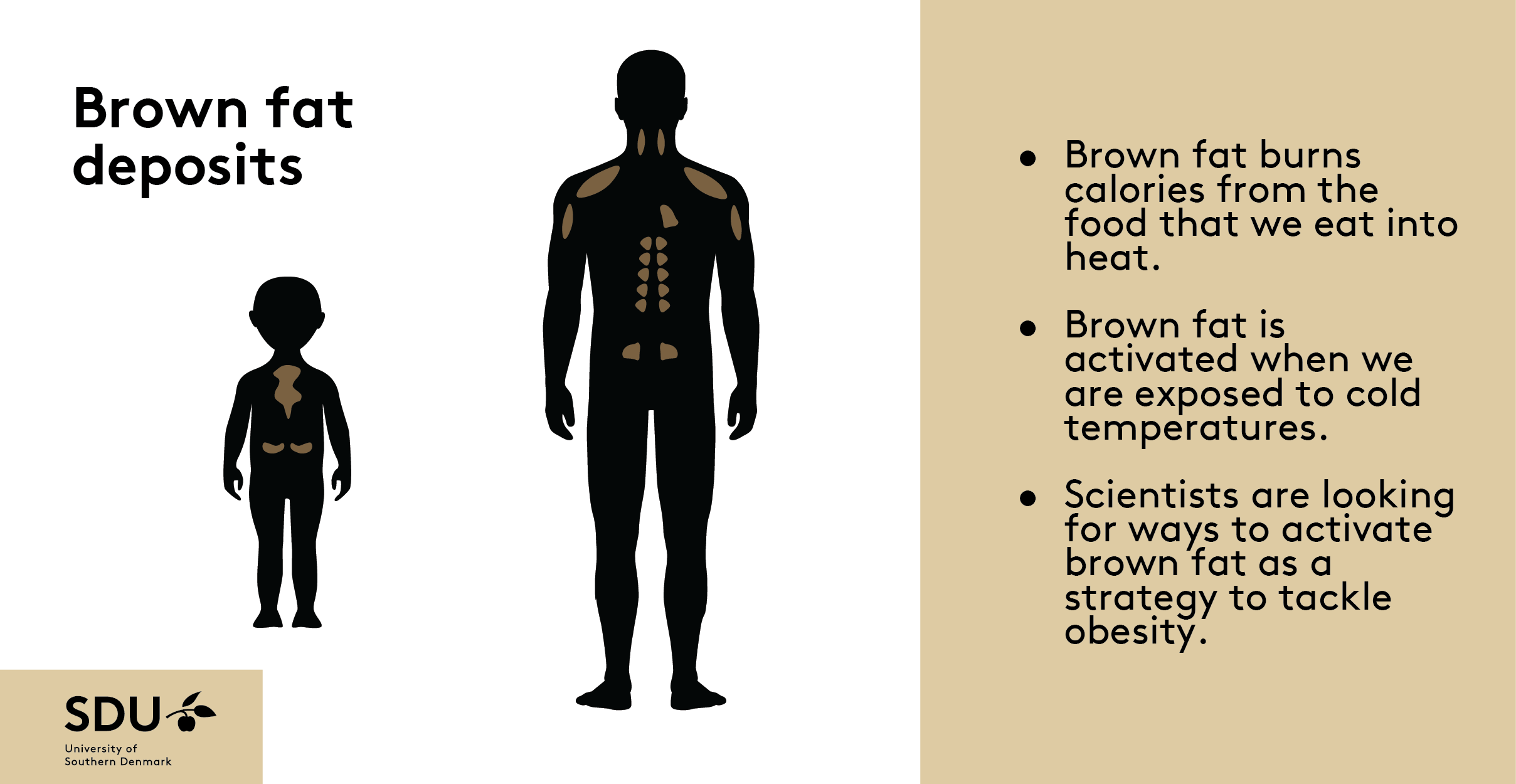
Can Brown Fat Help in the Fight Against Obesity?
Unlike the body’s white fat, brown fat is considered healthy because it helps us burn calories. As a consequence, research interest in brown fat is significant, and now a Danish-German research team reports a new discovery.
Brown fat is a special type of fat in the body that differs from the white fat found in many of us around the abdomen and thighs. For years, it has been known that newborns have brown fat, helping them to regulate heat. However, about 15 years ago, researchers discovered that brown fat also exists in adults.
Since then, scientists have been trying to learn more about brown fat because it has a unique ability to burn calories—even if you’re sitting on your couch instead of working out at the gym. However, the calory burn only happens when the brown fat is active, which is rare in adults.
A big question has arisen: How can brown fat be increased and activated? And can this activation lead to such significant calorie burning that it aids in weight loss?

Many researchers are looking for answers, and now a Danish-German research team has come one step closer to a solution. The team consists of two research groups led by Professor Jan-Wilhelm Kornfeld from SDU and Dagmar Wachten from the university and university hospital in Bonn, Germany. The study has been published in Nature Metabolism.
The team has discovered that brown fat possesses a previously unknown built-in mechanism that switches off its activity shortly after activation, preventing it from working for an extended period. More specifically, the researchers have identified a protein responsible for this stop-process. This protein is called AC3-AT.
According to the study’s lead author, Hande Topel, senior postdoc in Kornfeld’s research group at SDU, there are significant implications of this discovery.
Mice got better at burning calories
- Looking ahead, we think that finding ways to block AC3-AT could be a promising strategy for safely activating brown fat and tackling obesity and related health problems, she says.
The research team discovered the stop-protein AC3-AT using advanced technology capable of identifying unknown gene products and could thereby predict hitherto unknown proteins. They also studied mice in which AC3-AT was artificially removed from their genome.
- The mice lacking AC3-AT were protected against becoming overweight. Their bodies were simply better at burning calories, and their metabolic rate increased because their brown fat was activated, explains Hande Topel.
Who has brown fat?
Newborns have brown fat, and some adults, too. However, scientists don’t know how many adults and how much they have. A recent study of more than 50.000 participants [BS1]found that 5-10 % of adults have discernable brown fat in adulthood, obese people even less. Scientists are both looking for ways to increase these amounts of brown fat and to activate them.
Co-author of the study, Ronja Kardinal, a Ph.D. student under Professor Dagmar Wachten, adds:
- AC3-AT is not only found in mice but also in humans. There are direct therapeutic implications for humans.
Although the occurrence of brown fat decreases with age in humans, some adults can still activate it. Cold exposure, such as winter bathing, triggers this activation. When the body faces cold, it must do something extra to retain heat, and one of those mechanisms is activating brown fat to generate warmth.
AC3-AT was not the only relevant protein the researchers found. They also discovered other previously unknown proteins or gene variants that respond to cold similarly to AC3-AT. However, according to the researchers, it’s too early to determine whether these can be used for activating brown fat in human treatments.
Meet the researcher
Jan-Wilhelm Kornfeld is a professor and co-founder of the Center for Adipocyte Signaling (Adiposign) at the Department of Biochemistry and Molecular Biology. His research group is supported by the Novo Nordisk Foundation, the Danish Independent Research Fund, the National Health Insurance “danmark,” the Danish Diabetes and Endocrine Academy (DDEA), and the Danish Cardiovascular Academy (DCA).